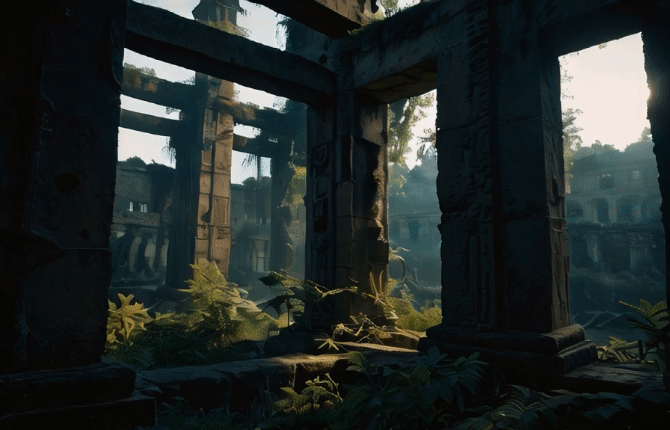
For better or worse, I’m getting a bit of a reputation as ‘the AI guy’ in my immediate institutional sub-area. Depending on how charitable you’re feeling, this could be seen as very generous or wildly unfounded. I am not in any way a computer scientist or expert on emergent consciousness, synthetic cognition, language models, media generators, or even prompt engineering. I remain the same old film and media teacher and researcher I’ve always been. But I have always used fairly advanced technology as part of anything creative. My earliest memories are of typing up, decorating, and printing off books or banners or posters from my Dad’s old IBM computer. From there it was using PC laptops and desktops, and programs like Publisher or WordPerfect, 3D Movie Maker and Fine Artist, and then more media-specific tools at uni, like Final Cut and Pro Tools.
Working constantly with computers, software, and apps, automatically turns you into something of a problem-solver—the hilarious ‘joke’ of media education is that the teachers have to be only slightly quicker than their students at Googling a solution. As well as problem-solving, I am predisposed to ‘daisy-chaining’. My introduction to the term was as a means of connecting multiple devices together—on Mac systems circa 2007-2017 this was fairly standard practice thanks to the inter-connectivity of Firewire cables and ports (though I’m informed that this is still common even through USB). Reflecting back on years of software and tool usage, though, I can see how I was daisy-chaining constantly. Ripping from CD or DVD, or capturing from tape, then converting to a useable format in one program, then importing the export to another program, editing or adjusting, exporting once again, then burning or converting et cetera et cetera. Even not that long ago, there weren’t exactly ‘one-stop’ solutions to media, in the same way that you might see an app like CapCut or Instagram in that way now.
There’s also a kind of ethos to daisy-chaining. In shifting from one app, program, platform, or system, to another, you’re learning different ways of doing things, adapting your workflows each time, even if only subtly. Each interface presents you with new or different options, so you can apply a unique combination of visual, aural, and affective layers to your work. There’s also an ethos of independence: you are not locked in to one app’s way of doing things. You are adaptable, changeable, and you cherry-pick the best of what a variety of tools has to offer in order to make your work the best it can be. This is the platform economics argument, or the political platform economics argument, or some variant on all of this. Like everyone, I’ve spent many hours whinging about the time it took to make stuff or to get stuff done, wishing there was the ‘perfect app’ that would just do it all. But over time I’ve come to love my bundle of tools—the set I download/install first whenever I get a new machine (or have to wipe an old one); my (vomits) ‘stack’.
* * * * *
The above philosophy is what I’ve found myself doing with AI tools. I suppose out of all of them, I use Claude the most. I’ve found it the most straightforward in terms of setting up custom workspaces (what Claude calls ‘Projects’ and what ChatGPT calls ‘Custom GPTs’), and just generally really like the character and flavour of responses I get back. I like that it’s a little wordy, a little more academic, a little more florid, because that’s how I write and speak; though I suppose the outputs are not just encoded into the model, but also a mirror of how I’ve engaged with it. Right now in Claude I have a handful of projects set up:
- Executive Assistant: Helps me manage my time, prioritise tasks, and keep me on track with work and creative projects. I’ve given it summaries of all my projects and commitments, so it can offer informed suggestions where necessary.
- Research Assistant: I’ve given this most of my research outputs, as well as a curated selection of research notes, ideas, reference summaries, sometimes whole source texts. This project is where I’ll brainstorm research or teaching ideas, fleshing out concepts, building courses, etc
- Creative Partner: This remains semi-experimental, because I actually don’t find AI that useful in this particular instance. However, this project has been trained on a couple of my produced media works, as well as a handful of creative ideas. I find the responses far too long to be useful, and often very tangential to what I’m actually trying to get out of it—but this is as much a project context and prompting problem as it is anything else.
- 2 x Course Assistants: Two projects have been trained with all the materials related to the courses I’m running in the upcoming semester. These projects are used to brainstorm course structures, lesson plans, and even lecture outlines.
- Systems Assistant: This is a little different to the Executive/Research Assistants, in that it is specifically set up around ‘systems’, so the various tools, methods, workflows that I use for any given task. It’s also a kind of ‘life admin’ helper in the sense of managing information, documents, knowledge, and so on. Now that I think of it, ‘Daisy’ would probably be a great name for this project—but then again…
I will often bounce ideas, prompts, notes between all of these different projects. How much this process corrupts the ‘purity’ of each individual project is not particularly clear to me, though I figure if it’s done in an individual chat instance it’s probably not that much of an issue. If I want to make something part of a given project’s ongoing working ‘knowledge’, I’ll put a summary somewhere in its context documents.
But Claude is just one of the AI tools I use. I also have a bunch of language models on a hard drive that is always connected to my computer; I use these through the app GPT4All. These have similar functionality to Claude, ChatGPT, or any other proprietary/corporate LLM chatbot. Apart from the upper limit on their context windows, they have no usage limits; they run offline, privately, and at no cost. Their efficacy, though, is mixed. Llama and its variants are usually pretty reliable—though this is a Meta-built model, so there’s an accompanying ‘ick’ whenever I use it. Falcon, Hermes, and OpenOrca are independently developed, though these have taken quite some getting used to—I’ve also found that cloning them and training them on specific documents and with unique context prompts is the best way to use them.
With all of these tools, I frequently jump between them, testing the same prompt across multiple models, or asking one model to generate prompts for another. This is a system of usage that may seem confusing at first glance, but is actually quite fluid. The outputs I get are interesting, diverse, and useful, rather than all being of the same ‘flavour’. Getting three different summaries of the same article, for example, lets me see what different models privilege in their ‘reading’—and then I’ll know which tool to use to target that aspect next time. Using AI in this way is still time-intensive, but I’ve found it much less laborious than repeatedly hammering at a prompt in a single tool trying to get the right thing. It’s also much more enjoyable, and feels more ‘human’, in the sense that you’re bouncing around between different helpers, all of whom have different strengths. The fail-rate is thus significantly lowered.
Returning to ethos, using AI in this way feels more authentic. You learn more quickly how each tool functions, and what they’re best at. Jumping to different tools feels less like a context switch—as it might between software—and more like asking a different co-worker to weigh in. As someone who processes things through dialogue—be that with myself, with a journal, or with a friend or family member—this is a surprisingly natural way of working, of learning, and of creating. I may not be ‘the AI guy’ from a technical or qualifications standpoint, but I feel like I’m starting to earn the moniker at least from a practical, runs on the board perspective.



